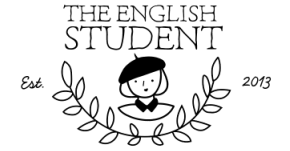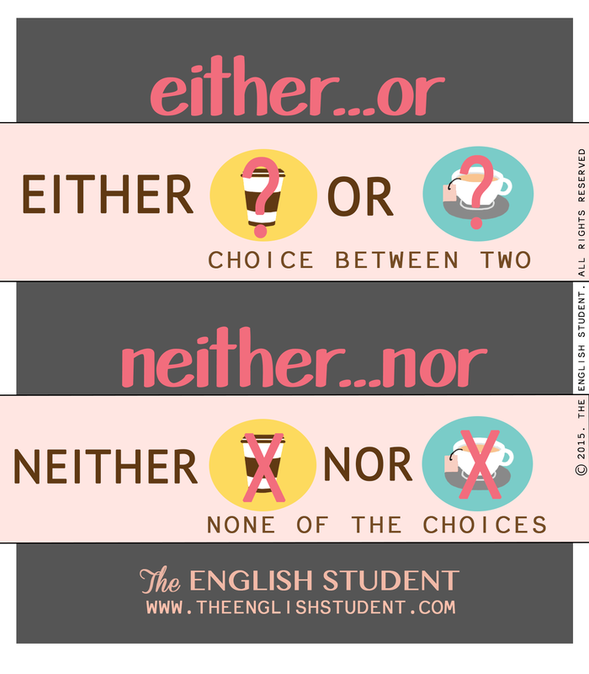There are certain ways we can talk about choices or to express none of the choices. One of them is using 'either' and 'neither' as conjunctions.
'Either' and 'neither' can be commonly used as conjunctions with 'or' and 'nor.' It is always 'either' with 'or' and 'neither' with 'nor.'
Let's look at the pair, 'either/or' first.
Either/ or provides a choice between two possibilities. Usually options are open and given. It basically means this one or another one.
We can place 'either' at the beginning of a sentence
For example,
"Either my mom or dad will attend"
It is placed after a verb if the two actions use the same verb
For example,
"We can watch either Batman or Titanic." - The verb is "watch" in this sentence
Either is placed before a verb if the two actions are different and uses a different verb
For example,
"I can either go back to school or find a new job." - The verbs 'go' and 'find' are different
Neither/nor are used in negative sentences meaning, not this one and not the other. I don't want/ have any of those choice (same as not either)
For example,
"Neither coffee nor tea."
"I'm sorry but neither size 6 nor 7 are available."
A good way to remember the difference is to think of 'either' as being one and 'neither' as being none. It's also important to remember that you can't interchange 'either' with 'nor' and use 'neither' with 'or.' Both 'either' and 'neither' can also be used as adjectives and pronouns. In both cases they also carry the same meaning ('either' means one or the other and 'neither' means none of the two )
Related Lessons:
This and That
Learning From The Movie Up
Solve The Robbery








 RSS Feed
RSS Feed
